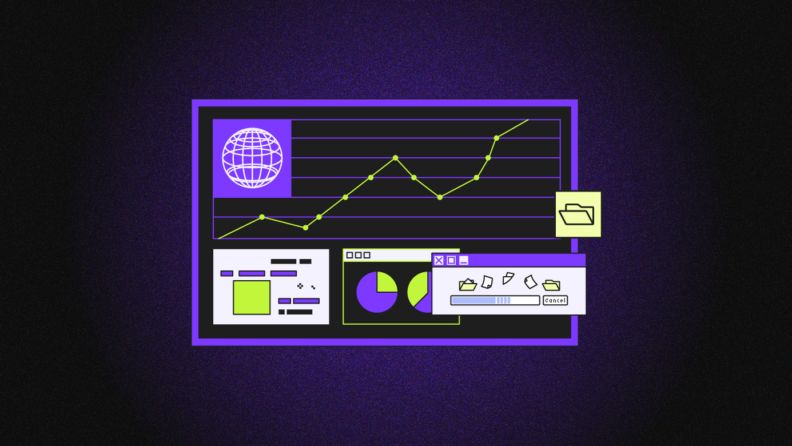In the modern business world, technology is both a powerful ally and a challenging beast that needs to be tamed. IT management stands at the forefront of this challenge, overseeing all matters related to information technology operations and resources within an organization. It's a broad discipline that encompasses managing hardware, software, networks, and data, as well as the people involved in these areas.
As businesses grapple with AI, big data, cloud computing, and more, IT managers are the strategists and custodians of the digital domain. They are trying to tame the 'tech beast,' turning technological challenges into opportunities, and in doing so, they shape the future of business.
But what exactly is IT management, and how can you maximize its effectiveness? Here, I'll explore some of the principles of effective IT management.
What is IT Management?
IT management is the monitoring and administration of an organization’s IT systems. It covers the hardware, software, and networks your organization uses every day, helping ensure those systems operate efficiently and are suitable for the needs of the users. IT managers are responsible for effectively controlling, guiding, and utilizing the complex and often overwhelming array of technology within an organization.
Why is IT Management Important for Organizations?
Because it aligns technology-related decisions and actions with the overall strategy and needs of the organization. Effective IT management ensures that technology resources are utilized efficiently and effectively, helps manage costs, enhances productivity, and improves the quality of IT services delivered to users.
Today, information technology is ubiquitous. It’s used for automation, communication, and data processing. It’s not only IT businesses that rely on computer systems; all industries use them in one form or another. IT system failures can cause serious issues for a company’s operations. Data breaches can have a lasting negative impact on a company’s reputation, as well as costing significant amounts in fines and legal fees.
The role of IT managers goes further than simply overseeing the maintenance of existing IT systems. Innovations in cloud computing, artificial intelligence, and IoT technology are things CTOs and CIOs should keep up-to-date with, looking for ways to apply these new technologies in their organizations.
IT managers drive innovation in their organizations, offering ways to improve the user or customer experience, cut costs, streamline day-to-day operations, and increase productivity.
A few years ago, IT management’s remit may simply have been “taking care of the server room,” but today, they have a role in every aspect of business operations.
IT Management's Role in Emerging Tech
The core job of anyone in IT management is to oversee current IT projects, but forward-thinking managers also invest time into studying emerging technologies so they can prepare their teams for the future. Useful trends and technologies to monitor include:
- AI and machine learning technologies are advancing at an incredible rate. With the right training data, these tools can be applied in almost any industry, potentially offering significant gains in productivity.
- Cloud computing and hybrid cloud deployments can help organizations scale their IT operations while reducing operational costs.
- Analytics tools empower organizations to make data-driven decisions. Today, it’s possible to gather vast amounts of data about almost every aspect of an organization's day-to-day operations and process that data to get insights into customer behavior, market trends, and logistics.
- IoT devices enable data gathering and monitoring for a variety of purposes. For example, they can be used to monitor machines for predictive maintenance or track vehicles to gain a better understanding of your supply chains. Combined with edge computing to allow efficient data collection and processing, IoT devices can give your organization a competitive edge.
IT management specialists aren’t just technology enthusiasts, however. Their technical know-how should be combined with an awareness of how the organization’s IT strategy aligns with operational goals. Some valuable practical skills include:
Strategic Planning and Goal Setting
A clearly defined IT strategy helps ensure your IT infrastructure is aligned with your organization’s current and future needs. Your IT strategy should outline how your infrastructure supports business operations, what steps you’re taking to protect your organization’s data, and how you plan to ensure your infrastructure can scale or evolve to meet changing organizational demands.
Any plans must consider IT governance and budget, and it should be clear how the suggestions align with current business goals. Effective managers understand how to get key stakeholders on board with the team’s plans and measure their team's performance to show when goals are met.
Resource Allocation and Budget Management
The IT management team is responsible for allocating IT resources effectively and budgeting for ongoing costs like operating system licenses, cloud resources, or hardware. Effective IT managers can compare the costs of public cloud vs private/hybrid arrangements, select suitable SaaS vendors, manage licensing agreements, and work out how to get the most out of the available resources while keeping costs low.
Technical debt is a massive issue in many organizations, and one that’s rearing its head beyond the migration of legacy services to the cloud. Even AI models are showing signs of technical debt as they’re deployed for uses outside of their original training environment. IT managers must plan for such issues and decide when it’s worth refactoring versus going back to the drawing board with a big project.
Technology and Infrastructure Oversight
Monitoring the organization’s current infrastructure – and planning any changes to ensure they’re necessary, beneficial, and optimal – is a major part of an IT manager’s role. Their role involves evaluating technology systems and also having input into decision-making about infrastructure investment.
According to data collected by UK group IT Governance, there were almost 6 billion records stolen in data breaches in 2023. Cyberattacks are something IT management teams should be prepared to deal with every day. IT teams need to stay current on the latest best practices for cybersecurity, especially considering how quickly these bad actors can adapt.
By having SIEM tools and network monitoring systems in place, your team can identify the root cause of any performance issues, be made aware of potential cyber-attacks, and have visibility into the health of the network.
Depending on the size of the team, the IT manager may delegate day-to-day monitoring to technicians or a security lead, or they may be more hands-on. In either case, they’re likely to be setting the policies and procedures for ensuring the security and health of the organization’s infrastructure themselves.
IT Management Solutions
There are so many IT management software options to take advantage of that can assist with day-to-day tasks, including:
- NetSuite: This unified, cloud-based system combines ERP/Financials and CRM in one easy-to-use dashboard, making it invaluable for IT managers and other department heads.
- Freshdesk: This ticketing system is helpful for small and medium-sized businesses looking to track customer queries and provide 24/7 support.
- Agiloft: A powerful contract lifecycle management tool, Agiloft can be used for sales and procurement. Automate key processes and use their artificial intelligence training tools and extensible systems for maximum productivity.
- SolarWinds Service Desk: An AI-powered IT Service Management (ITSM) tool, SolarWinds Service Desk also offers IT Asset Management (ITAM) solutions, reporting and tools for ticket classification, routing, and self-service delivery.
- Cherwell IT Service Management: This ITSM tool is a flexible service desk suite that is easy to set up, flexible, and extensible, making it suited for organizations of any size. It supports multiple channels to allow users to check on service requests or raise issues from the platform of their choice and has built-in ITAM and ITIL solutions, too.
Tools such as those listed above, along with a modern DevOps pipeline and development toolchains your team is familiar with, can help your organization achieve peak IT efficiency.
Manage Your Assets Like a Pro
Information technology management is a vital job that requires problem-solving, interpersonal, and technical skills. Every day on the job is different, and influential IT leaders can communicate with technical and non-technical individuals, address cybersecurity and business issues with equal confidence, and inspire their IT team members.
Join our newsletter to learn more about IT management, cybersecurity, artificial intelligence and other key issues relevant to CTOs – you'll recieve industry updates direct to your mailbox.



